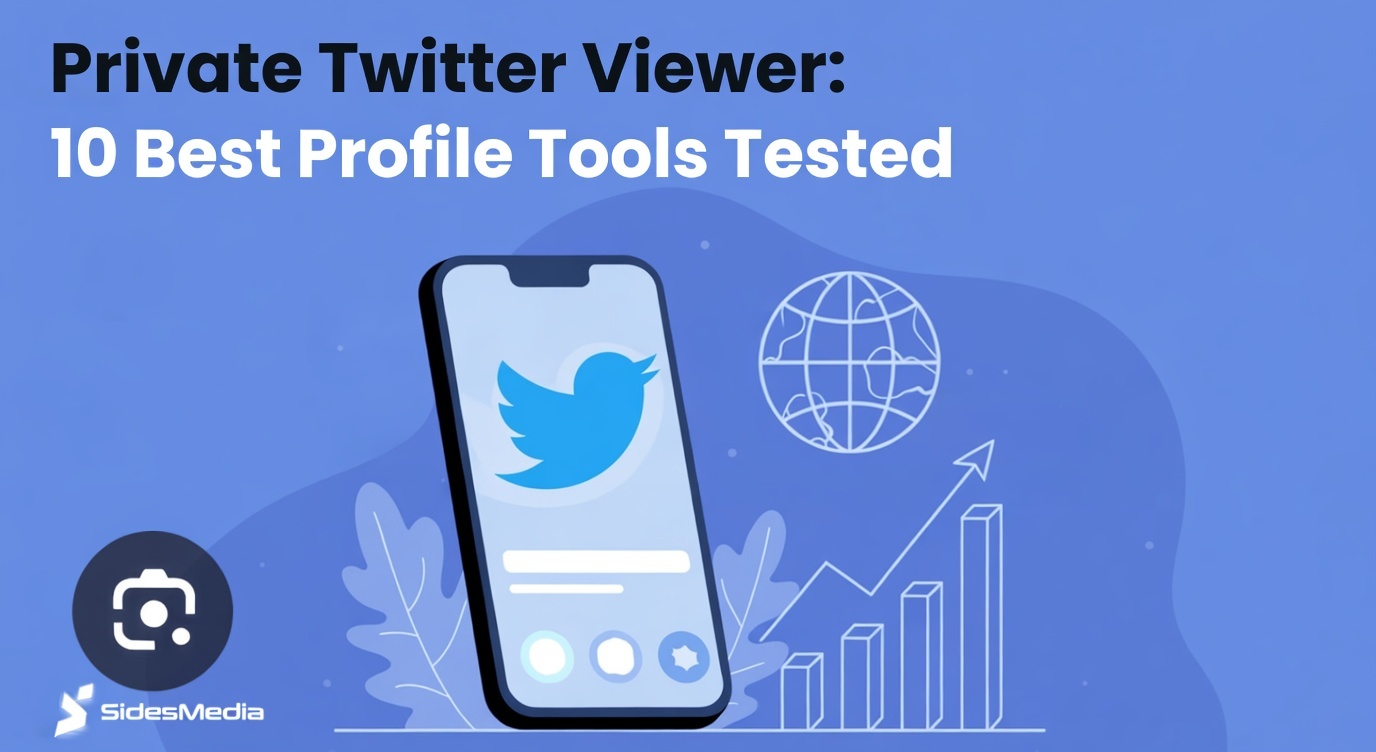YouTube Statistics: Surprising Facts and Insights
Published: November 4, 2024
YouTube statistics show just how massive this platform has become. From its humble beginnings in 2005 to being the giant it is today, the YouTube mobile app has transformed how we consume content.
With the rise of video marketing and YouTube promotion services, creators now have more opportunities than ever to increase their reach and engagement.
Let’s dive into some fascinating numbers, trends, and what they mean for viewers and creators.
How Big is YouTube?

To say the YouTube app is popular would be an understatement. Today, more than 2.5 billion people log in to watch YouTube videos every month.
That’s a third of the world’s population!
Daily Usage
Every day, over one billion hours of content are watched on the YouTube mobile app.
That’s like every person on Earth watching eight minutes of video daily.
With such high engagement, it’s crucial to understand ways to get more views on YouTube Shorts, as the platform continues to push this short-form video content.
The platform sees a whopping 500 hours of YouTube video uploaded every minute.
Imagine trying to catch up – impossible!
The Evolution of YouTube Content
In its early days, YouTube was known for funny cat videos and personal vlogs. Today, the content spectrum is vast, including tutorials, music videos, documentaries, and live streaming. If you’re looking to buy YouTube views to boost your presence in such a crowded space, consider this option to gain more visibility.
Over 80% of YouTube users say they use the platform for how-to content (Think with Google, 2023). If you want to buy YouTube Watch Hours, consider creating educational content, as this format consistently attracts large audiences.
Top YouTube Genres
- Music Videos: Channels like T-Series and major artists dominate this genre.
- Gaming: Gamers like PewDiePie and Markiplier have gained massive followings.
- Educational Content: Channels such as Ted-Ed and Veritasium bring complex topics to life.
Top Countries Using YouTube
While YouTube has YouTube users worldwide, some countries have more viewers than others.
- United States: The US tops the chart, with over 246 million YouTube users as of 2023.
- India: Coming in second, India has approximately 467 million active YouTube users.
- Japan: Third place goes to Japan, boasting around 97 million YouTube users.
These numbers highlight the global reach and influence of the platform.
YouTube’s Audience Breakdown

YouTube’s audience is diverse, spanning different age groups, genders, and device preferences.
Understanding this breakdown helps creators and marketers tailor their content to engage their target viewers effectively.
If you’re looking to monetize your YouTube channel, you’ll need to know your audience well. Way to monetize my YouTube channel include ad revenue, sponsorships, and more, depending on your audience’s interests and viewing habits.
- Age Groups: YouTube attracts various age groups, but 18-34-year-olds are the most active. About 77% of internet YouTube users in this age bracket are on YouTube (Pew Research, 2023).
- Gender: YouTube usage is split relatively evenly, with 53% male and 47% female.
- Mobile vs. Desktop: A staggering 70% of YouTube views come from mobile devices (YouTube Insights, 2023).
YouTube and Content Creators
For content creators, YouTube isn’t just a place to share videos – it’s a business. Channels can make money through ads, sponsorships, and memberships.
On average, YouTube creators earn about $3 to $5 per 1,000 YouTube video views through ad revenue alone.
Top YouTubers, like MrBeast, reportedly earned over $54 million in 2022 (Forbes, 2023).
Monetization Beyond Ads
Creators have diversified their income streams:
- Sponsorships: Collaborations with brands can bring in significant revenue.
- Merchandise: Selling branded items boosts earnings.
- Memberships: Fans can pay for exclusive content and perks.
Advertise Your YouTube Channel to increase brand deals and sponsorship opportunities.
Ad Revenue
YouTube’s total ad revenue in 2022 was about $29.2 billion. This huge number shows how lucrative the platform has become for both YouTube and its creators.
It’s interesting to note that YouTube’s share of the total digital ad market is around 11.4%, making it a major player in the advertising industry.
The Most Subscribed Channels

Who leads the pack when it comes to subscribers?
- T-Series: The Indian music channel has an impressive 248 million subscribers.
- MrBeast: Popular for outrageous stunts, MrBeast has over 180 million subscribers.
- Cocomelon: This kids’ channel, loved for its catchy songs, boasts about 165 million subscribers.
- SET India: An entertainment channel with over 160 million subscribers.
Channels like these are prime examples of success, and for anyone wondering about the most subscribed YouTube channel, these top names give insight into how to grow and maintain large subscriber bases.
Trends to Watch in 2024
The platform is always evolving. Here are a few trends to keep an eye on:
- Short-Form Content: With the rise of TikTok, YouTube Shorts has become a big deal. 1.5 billion users engage with Shorts monthly. If you’re looking to buy YouTube Shorts Views, Shorts is an ideal place to start.
- AI-Generated Content: AI tools are making it easier to create videos, leading to new types of content.
- Live Streaming: More creators are using live streams for Q&As, events, and real-time content. Buy YouTube live views by leveraging this format.
- Interactive Videos: Viewers love feeling involved. Interactive quizzes and YouTube’s user base content are on the rise.
Growth of YouTube Shorts
Shorts have proven to be YouTube’s answer to short-form YouTube video apps.
Over 70% of creators say that adding Shorts to their content strategy has increased their overall channel views.
Shorts’ easy format makes it ideal for creators looking to expand their audience quickly. So if you’re hoping to buy YouTube likes or buy YouTube comments, Shorts is a great option.
Comparison Table: YouTube vs. Other Platforms
| Platform | Monthly Active Users | Daily Hours Watched | Uploads per Minute |
| YouTube | 2.5 billion | 1 billion hours | 500 hours |
| TikTok | 1.1 billion | 167 million hours | 72 hours |
| 2 billion | 95 million hours | 60 hours | |
| 2.9 billion | 500 million hours | 150 hours |
Tips for New Creators
Starting out on YouTube can feel overwhelming. Here are a few tips:
- Stay Consistent: Uploading regularly helps your channel grow.
- Engage with Your Audience: Respond to comments and ask questions to build a community.
- Optimize Video Titles and Descriptions: Make sure your content is discoverable.
- Thumbnails Matter: Eye-catching thumbnails can boost your video’s click-through rate.
- Collaborate with Others: Partnering with other creators can help expand your reach.
If you’re struggling to buy YouTube subscribers, collaborating with other creators can help.
YouTube’s Role in Education
Educational content is huge on YouTube. Channels like Khan Academy and CrashCourse make learning accessible to millions.
A survey in 2023 found that 80% of students aged 13-17 use YouTube for study help (EdTech Magazine, 2023).
Teachers also report that incorporating YouTube videos into lessons helps improve engagement and understanding.
YouTube for Business and Marketing
Brands aren’t missing out on the opportunity to reach millions through YouTube. 62% of businesses use YouTube as a channel for video marketing.
Video ads on YouTube have shown to deliver a 54% increase in brand awareness compared to non-video ads.
Challenges YouTube Faces
Despite its success, YouTube isn’t without issues. Content moderation remains a tough challenge.
Misinformation, copyright claims, and balancing free speech with harmful content are ongoing debates.
Additionally, creators often struggle with the demonetization of content, which can impact their income.
Conclusion
YouTube statistics reveal a platform that’s both massive and complex. It’s where people watch, learn, and even earn a living.
For creators, YouTube is full of opportunities, but it also comes with competition and challenges.
Understanding YouTube stats can help you see the bigger picture and make informed decisions, whether you’re a viewer, creator, or advertiser.
Frequently Asked Questions
1. Where can I get YouTube stats?
If you want to find reliable YouTube stats, there are several trusted sources to explore. The YouTube Official Blog often shares updates and insights on YouTube usage and trends.
Statista is a great place for detailed, up-to-date stats on YouTube’s user base, video consumption, and ad revenue.
Pew Research Center provides studies that include data on YouTube’s demographic reach and user behavior.
For creators looking to understand trends and channel comparisons, tools like Social Blade offer analytics on subscriber counts, video views, and more.
These sources can help anyone get a clearer picture of YouTube’s size and influence.
2. What are the YouTube stats?
YouTube stats highlight just how influential the platform is.
Currently, it has over 2.5 billion monthly active YouTube users, which represents about one-third of the global internet population.
Each day, 1 billion hours of the most viewed YouTube video are watched, equivalent to every person on Earth watching YouTube videos for about eight minutes daily.
The scale of content being uploaded is equally astounding: 500 hours of video are uploaded to YouTube every minute.
This shows the fierce competition for attention among creators. In 2022, YouTube generated $29.2 billion in ad revenue, showcasing its impact as a major advertising platform.
To stand out in this crowded space, many creators are looking for ways to boost their visibility, including services that allow you to Buy YouTube Watch Hours to help increase your channel’s credibility and discoverability.
These numbers underline the platform’s position as a leader in video content consumption.
3. How to see YouTube watch stats?
If you’re a creator, accessing your YouTube watch stats is simple with YouTube Studio.
This tool provides comprehensive analytics, such as total watch time, average view duration, and audience demographics.
To check, log in to YouTube Studio, go to the Analytics tab, and you’ll find data about your watch time, traffic sources, and viewer retention.
For regular viewers wanting to check their personal viewing habits, YouTube offers a ‘Time watched’ feature under account settings.
This lets you see how much time you’ve spent watching YouTube videos daily, weekly, and on average, which can help manage screen time and monitor YouTube usage habits.
4. How to check YouTube channel details?
If you want detailed information about your own YouTube channel, YouTube Analytics in YouTube Studio is the go-to tool.
It provides stats on views, watch time, revenue (for monetized channels), and audience retention.
For those who want to see details about other channels, Social Blade is a popular platform that gives public data like subscriber counts, estimated monthly earnings, and average views.
VidIQ and TubeBuddy are also excellent for comparing channel performance and tracking growth over time.
These tools offer a more comprehensive look at a channel’s progress and can be especially helpful for creators aiming to analyze competitors or study top-performing channels in their niche.



